Allegedly found in mountain caverns or marshes, cave wyrms resembled dragons in many ways, and though they were unable to breathe fire or fly, they were often described as terrorizing villages by eating sheep or killing young maidens.
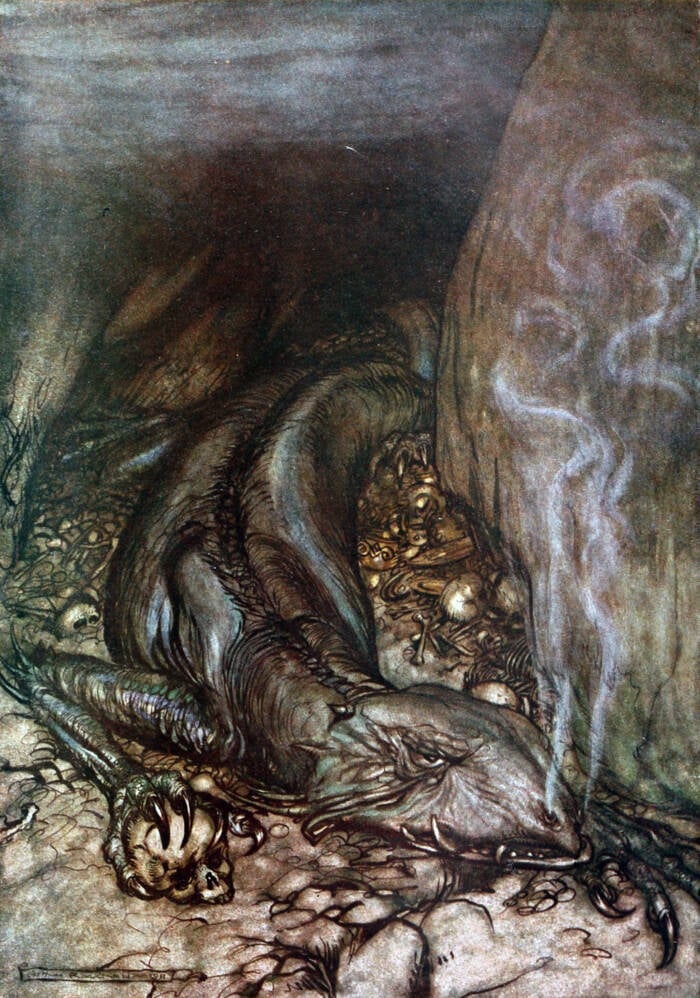
Public DomainFáfnir, a Germanic wyrm from Nordic mythology, guarding its treasure hoard deep within the belly of a cave.
Legends of dragons have long captivated humankind. In the Western world, they came to be associated with greed, treasure, and killing anyone who entered their lairs. But not all dragons in European mythology were winged, fire-breathing monsters. There were also cave wyrms.
Originating in old Germanic folklore, wyrms were more like snakes or serpents than the stereotypical dragon. They did not breathe fire; they did not have wings or limbs. Rather, cave wyrms were scaled, venomous, and known to lurk deep in caves or marshes.
These giant, serpent-like creatures appear in countless ancient stories, from epic tales like Beowulf to the formidable legends of the Norse people. And cave wyrms had many of the characteristics that would later be associated with famous European dragons. These cave-dwelling monsters lay the groundwork for stories like J.R.R. Tolkien’s The Hobbit, for example, in which the dragon Smaug hordes his treasure deep within The Great Hall of Thráin.
This is the story of the cave wyrm, the elusive mythological creature from European lore that offers a fascinating look into the origins of dragons.
What Is A Cave Wyrm? Inside The Myth Of The Elusive Monster
Today, dragons are a common feature of the fantasy genre, whether that be novels, films, tabletop games, video games, or television shows. Their likeness is well known thanks to the works of Tolkien and the ongoing popularity of games like Dungeons and Dragons, but the dragons of today are a sort of blend of various, serpent-like creatures from European folklore.
One of those creatures is the cave wyrm.
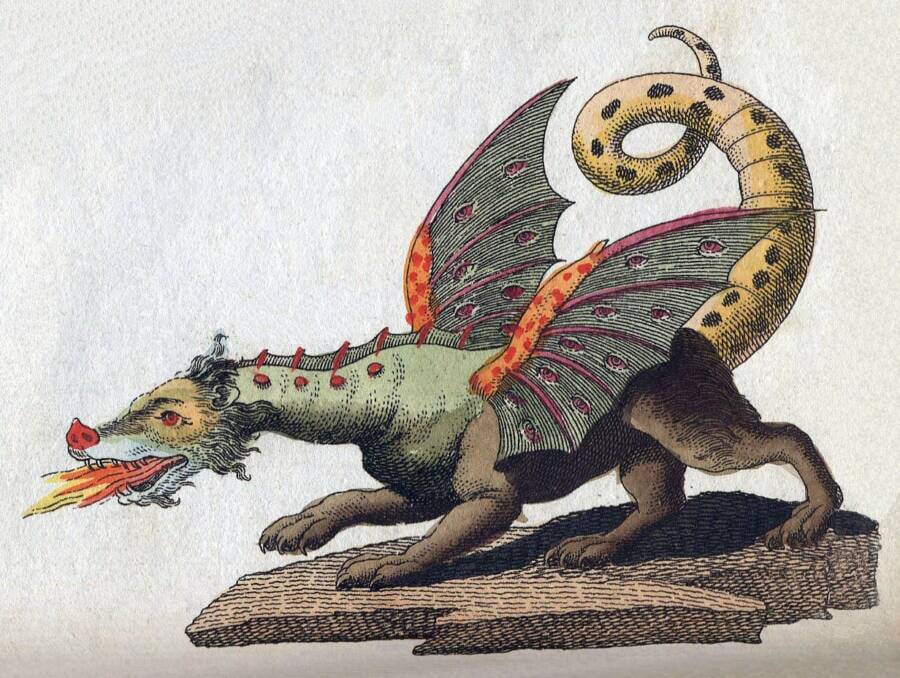
Public DomainA somewhat typical portrayal of a European dragon, with four legs and wings.
“Wyrm” is an archaic term for “dragon” (a word derived from the Old English dracan and the Old Norse dreki). For centuries, they were almost interchangeable, although wyrms were different from modern-day dragons — and winged dragons were sometimes called flogdreka, or “flying dragons.”
So what are cave wyrms? Wyrms could generally be described as large, venomous, snake-like creatures that hoarded gold and treasure. Scaly, limbless, and frequently found deep in mountain caves or marshes and fens, they often terrorized villages by eating sheep or kidnapping maidens.
And different cultures created their own versions of these creatures.
In Sweden, for instance, folklore often spoke of a creature called the lindwyrm, a giant serpent monster that resided deep within the forest. Sea serpents also featured prominently in Mesopotamian, Greek, Norse, and even biblical mythology, though they were not always classified specifically as wyrms. In France, there were legends of guivre, which were similar to wyrms except that they could fly and breathe venom. And in English mythology, there was the wyvern, a two-legged dragon with wings and a pointed tail.
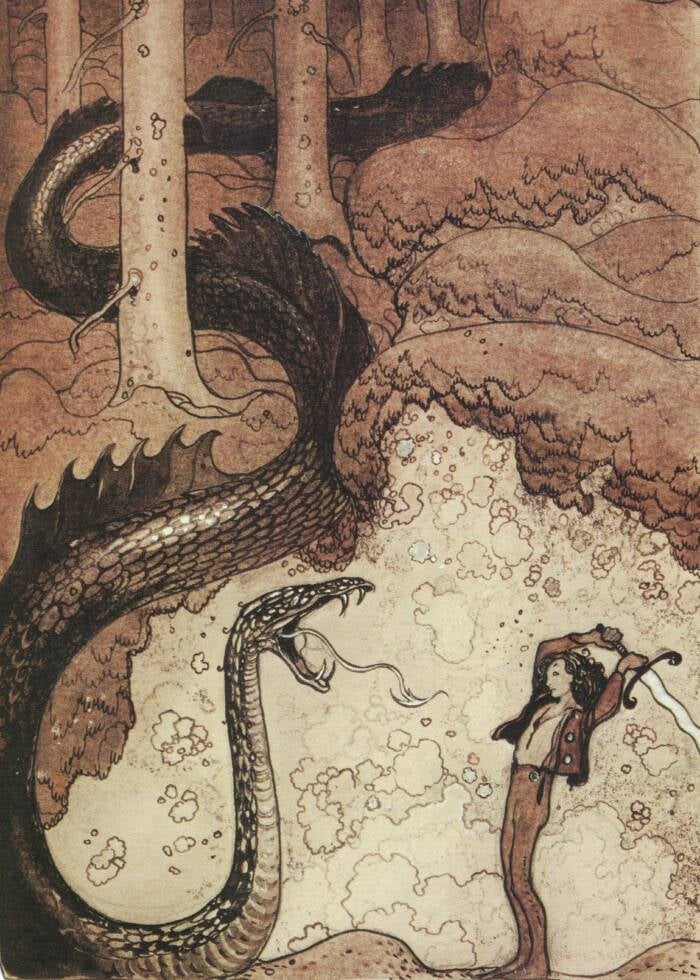
Public DomainAn illustration of the Swedish lindworm by illustrator John Bauer, 1911.
Indeed, “wyrm” came to serve as a catch-all term for these types of creatures, much like “dragon” does today. It is perhaps best to think of each creature as some variation on the same concept: Dragons typically have four legs and wings, drakes are four-legged and lack wings, wyverns are two-legged and winged, and wyrms are both wingless and legless.
Famous Wyrms From Mythology And Folklore
One of the most famous Old English epics, Beowulf, which dates back to the 10th century, refers to the titular hero Beowulf’s nemesis as simply “the dragon.” In the text, it is cited as both a wyrm and a draca, another archaic term for dragons. Still, despite the slight confusion surrounding its name, the wyrm in Beowulf is one of the best examples of typical wyrm traits.
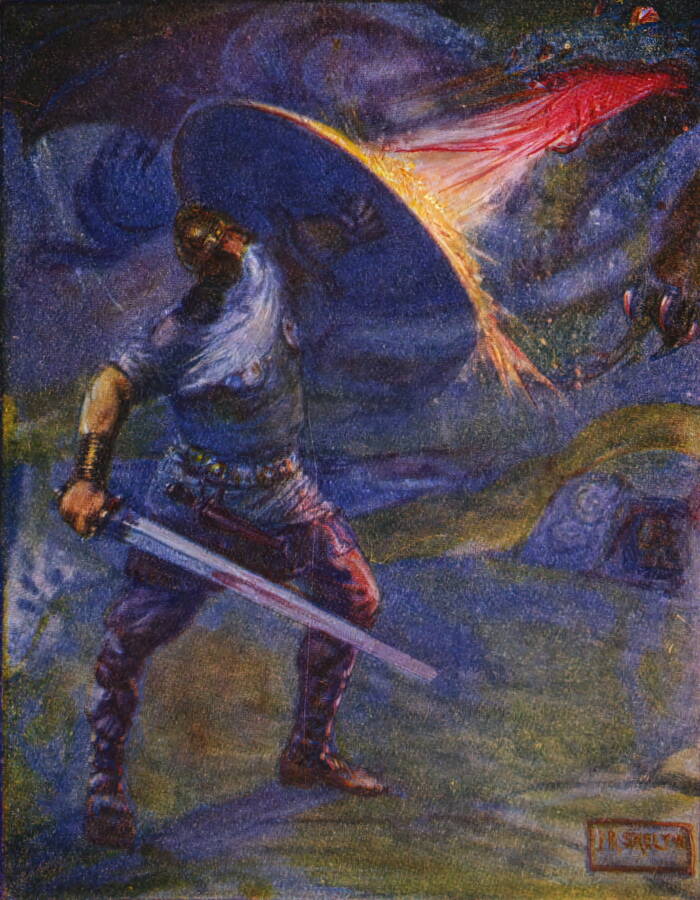
Public DomainBeowulf battling the dragon, from a 1908 illustration by J. R. Skelton.
In the tale’s third act, Beowulf has returned home after slaying Grendel and Grendel’s mother to become the king of the Geats. 50 years later, a slave sneaks into the wyrm’s cave and steals a bejeweled cup, angering the dragon and prompting it to attack the Geats’ lands. In response, Beowulf organizes a party to kill the beast — most of whom, other than the loyal Wiglaf, flee. The story ends with Beowulf suffering a fatal wound before Wiglaf strikes the wyrm with his sword and Beowulf finishes the creature off with his dagger.
This final act not only concluded one of the greatest epics of ancient history, but also established the very tropes that would come to be associated with wyrms, dragons, and dragonslayers for centuries to come. In fact, the wyrm in Beowulf served as direct inspiration for Tolkien’s The Hobbit — and Tolkien even created his own translation and commentary for Beowulf.
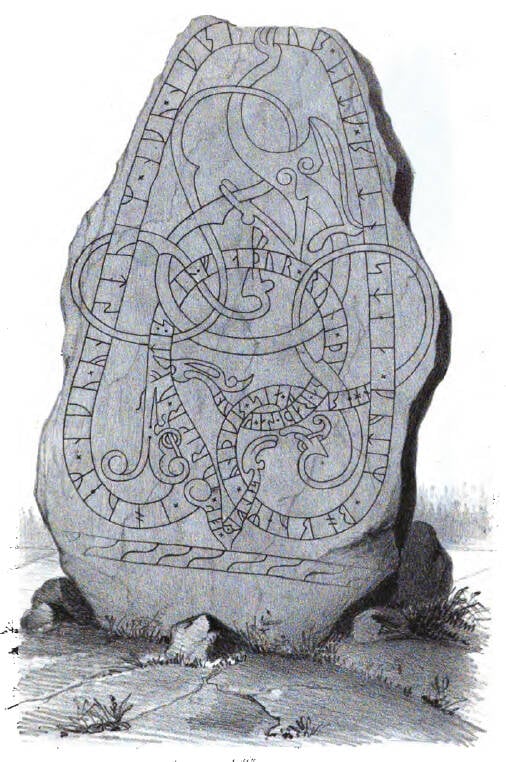
Public DomainA depiction of a Germanic dragon rune from Sweden.
In other mythological accounts, wyrms were given specific names, much like how the Gorgon Medusa was specifically named in Greek myths. In the Norse Völsung Cycle, a series of myths and legends surrounding the Völsung clan and the Germanic hero Sigurd, there is a wyrm known as Fáfnir.
Norse mythology also features the Midgard Serpent, a venomous beast and the son of Loki, also known as Jörmungandr. Jörmungandr is a serpent that circles the world and resides in the sea, an ouroboros constantly biting his own tail. It was said that should Jörmungandr ever release his tail, it was a sign that Ragnarök — the end of the world — was near.

Public DomainThor battering Jörmungandr, the Midgard Serpent.
The Norse myths also told of a great serpent known as Níðhöggr, which was said to gnaw at the roots of Yggdrasil, the World Tree. From Yggdrasil stemmed the Nine Worlds of the Norse cosmology, and it also served as a meeting ground for the gods. At the base of Yggdrasil, Níðhöggr chewed the roots and devoured the corpses of Náströnd, a location in Hel that served as the afterlife for murderers and those who had broken their oaths.
Indeed, there are countless cave wyrms — and creatures of a similar nature — in European mythology, but were these giant serpents only relegated to the worlds of myth and legend? Are cave wyrms real?
Are Cave Wyrms Real? No, But There Is One Similar Creature
Fortunately, you can rest easy knowing that cave wyrms are not real — at least, not the monstrous creatures depicted in ancient stories. While there may not be any treasure-hoarding serpents living in nearby caves, there are similar, strange creatures that share at least some of their characteristics.
Meet the blind cave dragon: an amphibious creature also known as the olm or the proteus, which lives deep in mountain caves.
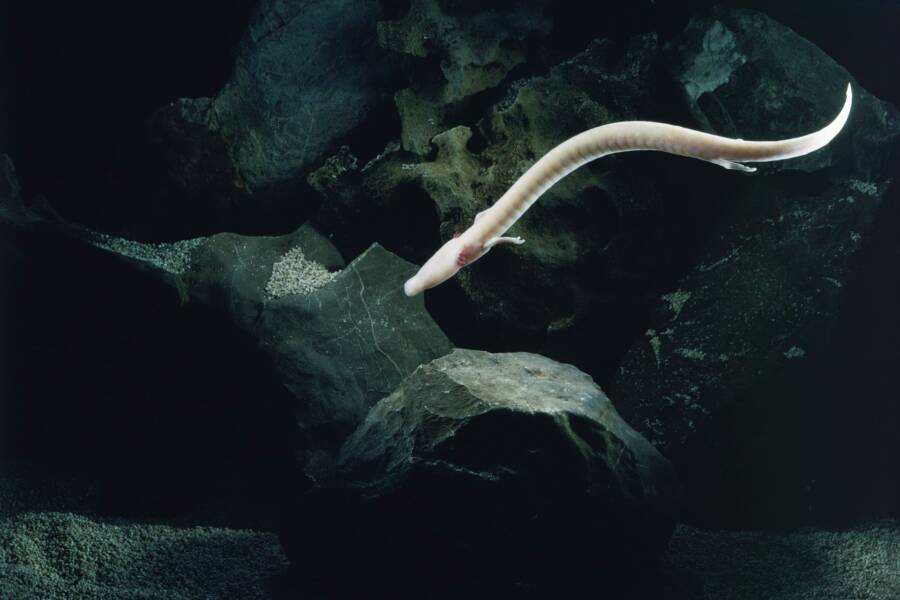
Wikimedia CommonsA blind cave dragon, also known as an olm.
As described in a 2017 Smithsonian Magazine report, these creatures were recently studied by members of the Tular Cave Laboratory, which is run by Slovenia’s Society of Cave Biology. Their research was a risky endeavor, as researchers had to dive far down to study these creatures, and sometimes found themselves trapped in cave pockets with dangerously low oxygen.
The blind cave dragon resembles a cave wyrm — and ancient people even once mistook them as baby dragons. Somewhat resembling an axolotl, and distantly related to waterdogs (mudpuppies), olms can grow to be up to 12 inches long and live up to 70 years. They can be found in deep cave systems throughout Slovenia, Italy, Croatia, and Herzegovina.
Like dragons of myth, olms exist at the top of the food chain in their environment, eating things like shrimp, spiders, arthropods, and wood lice — and their incredibly slow metabolism allows them to survive on tiny amounts of their food for years at a time. And like dragons and cave wyrms, they also rarely breach the surface, and prefer the darkness of their caves.
But that, however, is where the similarities end.
Ultimately these tiny creatures are just a shadow of the fearsome cave wyrm that terrorized European myths. Indeed, encountering a blind cave dragon is far less dangerous than entering a wyrm’s cave.
After learning about cave wyrms and other serpent-like creatures, learn about seven terrifying creatures from Native American mythology. Then, learn all about the ancient Celtic festival of Samhain.





